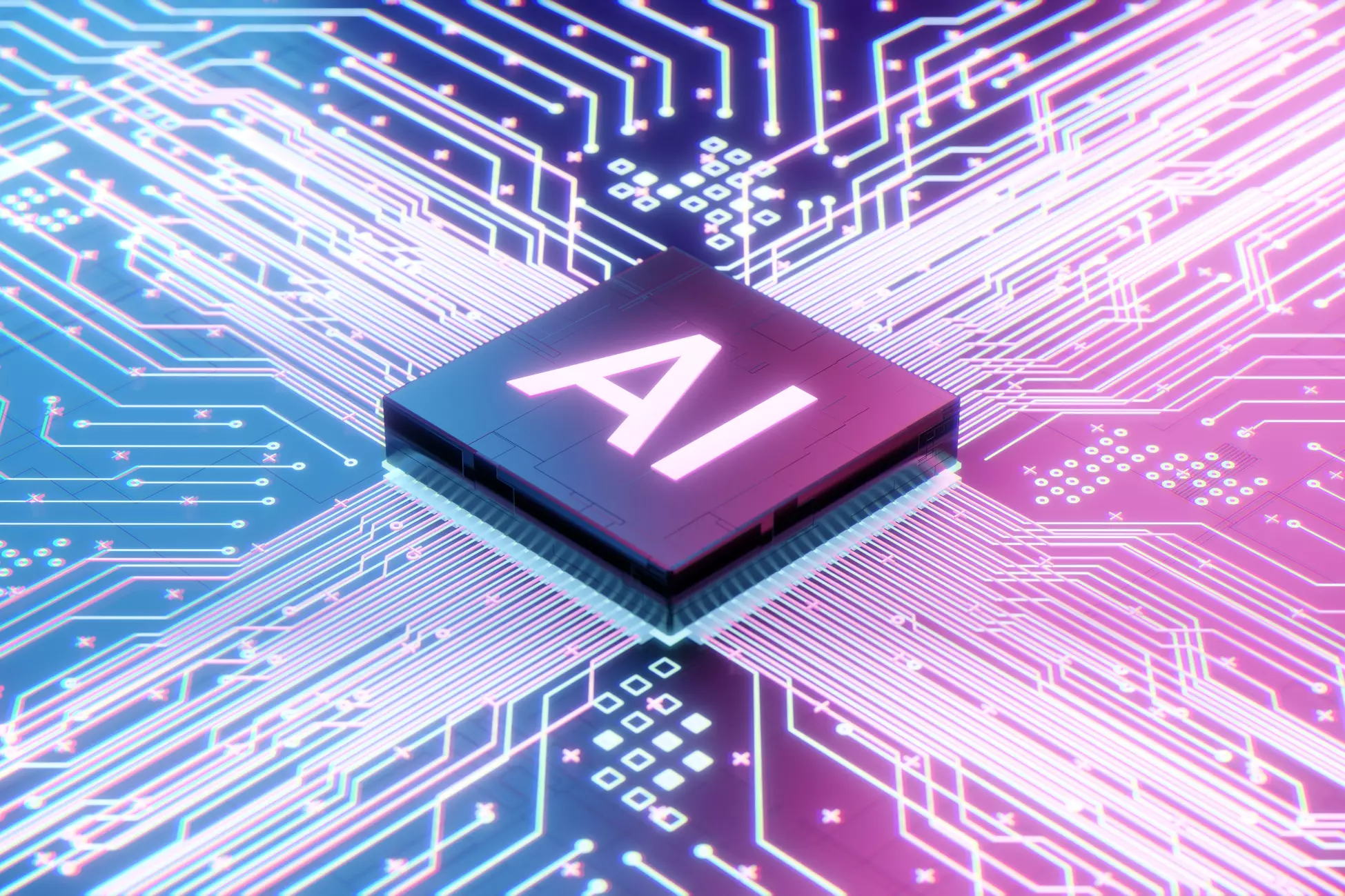What hardware do I need for AI?
Artificial intelligence is the hot new technology that has everyone all abuzz. From the impressive leaps taken by ChatGPT, and Microsoft and Google’s drive to get Copilot and Duet AI assistants into everyone’s home and work computers, AI is suddenly all around us. With enterprises all over the world beginning to utilize it to make sweeping changes to the way they operate, it feels like if you aren’t using AI to enhance your business or professional workloads, then you’re going to fall behind those that are.
But implementing any cutting-edge technology is difficult and complicated, and that goes double for AI because it’s not always clear how to use artificial intelligence to boost your business. You need to have the data to make use of it to start with, then you need the hardware to analyze it, the expertise to train the AI on that data, and then further expertise to know how to utilize it to best enhance your products, marketing, and sales practices.
In short, AI is very complicated, and with the industry moving as fast as it is, it pays to have true expertise at every step of your AI journey, from concept right through to implementation.
If you’ve had a look at our guide to modern AI and are interested to see how Chillblast can help you get started with using AI to enhance your business, let’s talk. Here’s everything you need to know about getting started with AI hardware.
On premises vs. the cloud
The hardware you’ll work with when deploying AI in any fashion will very much depend on whether you plan to operate the hardware for your solution on your premises (sometimes truncated to “on prem”) where you manage its ongoing use and expansion, or in the cloud. That’s where a third-party manages everything for you. There are big advantages and disadvantages to each, which we’ll look at here.

On premises
This is the AI deployment with the the greatest privacy, and the greatest control. If you are in any way looking to leverage sensitive data with you AI solution, then on premises is almost the only solution you should be considering. By retaining all of your data on premises you can ensure that it is never viewed by prying eyes, cannot be used for third-parties in any fashion, and isn’t ever viewed by cloud providers who are conducting maintenance, analytics, or optimization, which could require some kind of parsing of your data.
When you retain your data at the local level, that data remains yours in whatever capacity you want, though you’ll need to maintain your own security. However, you are only subject to the laws that apply to your local territory when it comes to data management. Whatever regulations your government has in place to manage user data and AI deployment, you’ll still need to comply with them, but if you are keeping your data on site, that’s the only regulations you’ll need to deal with. If you send your data to a cloud provider to generate AI insights, you may need to comply with the regulations in the cloud provider’s territories, which can be a minefield in its own right.
This can be particularly useful for rapid deployment of new AI features and functions for employees and customers alike. Having your own on-premises AI deployment keeps your flexible and 100%nomous, letting you leap on new AI developments quickly. On premises AI keeps you responsive, with only your own needs and whims to cater to. When using a cloud provider for AI deployment, there’s always the chance that their management will slow down your deployments and add additional layers of terms and conditions, laws, and policies that must be factored in before making any new AI developments and deployments.
Hardware options for on-premises AI deployments are not that different to those available through the cloud, but the cost for that hardware is drastically different. Where a cloud-based AI solution will charge you for the initial setup, the storage you take up, the processor cycles you require, and the ongoing maintenance and management of your installation, the main cost will be over the long term should you maintain that deployment far into the future.
For an on-premises AI deployment, you’ll need to pay for all the hardware up front. You could theoretically set up something that’s just as, if not more, capable than those available through the cloud, but the setup costs would be gigantic. For smaller proof of concept designs, or even medium size deployments, that’s not necessarily an enormous expenditure for larger businesses with strong revenue streams, but AI development and deployments are not cheap.
You also need to consider the ongoing maintenance cost of any kind of large hardware deployment, physical security around such hardware, and the ongoing expense of expert staff management.
You’ll get to control what hardware you use, though, potentially leading to greater performance in your AI deployment. You can also manage future upgrades and expansion yourself. So if a new AI hardware solution comes along, you can immediately begin using it, where a cloud deployment may take longer to apply such upgrades to your system.
The biggest downside to on premises AI deployment is that you have to manage it all yourself. Or do you? Chillblast can help with every step of your AI deployment journey, from the original concept phase, right through small scale proof of concept designs, to the end result where AI is revolutionizing the way you leverage your data to do business. We can continue to support you post deployment, too, so you don’t need to handle it all yourself.

Cloud deployment
Using a third-party to manage your cloud deployed AI for you is a viable solution to the problem of, how to actually begin making use of your data with modern AI-driven insight. It offers a number of advantages over on-premises deployment, most notably the upfront cost is far lower. However, it also suffers from a number of disadvantages, like weaker data privacy, less control over how your data is used, and how your AI solution is upgraded and improved over time.
When deploying a cloud-centric AI platform, businesses only need to pay for the upfront deployment, and the ongoing hardware use: CPU and GPU cycles, and storage drive space. That can operate on a much more pay-as-you-go model, which for businesses which don’t plan on using a large scale AI deployment, can represent a much more cost effective solution. However, it’s worth bearing in mind that AI is a genie that is never going back into the bottle, so what is an affordable cloud AI solution today, may become much more expensive down the road. By then, with greater reliance on your AI solution and by extension, the cloud company that manages it, you will may end up beholden to that provider for much longer than you originally planned.
That said, unless you are willing to spend millions of pounds on developing your own large-scale datacenter solution, you are unlikely to be able to match the raw performance potential of a cloud AI provider. They are professionals in building, upgrading, and maintaining large server systems. They will use many of the latest technologies, and will have a robust schedule for upgrades in place, so the hardware will consistently be upgraded; And even if it isn’t, there will be scope for you increasing the size of your AI deployment to improve performance as and when you need it. On premises deployments require a much-more hands-on approach, and upgrades can take longer and will be much more costly in the near-term.
The same applies for scalability. A cloud-based AI provider is much more equipped to quickly scale up the hardware you have access too. If you have a lot of additional information that you want to add to your AI training data, a cloud provider can open up additional SSD storage space for you. Want to improve data processing speed or the overall performance of the AI? A cloud provider can simply route additional CPU and GPU cycles to your AI. Want to reduce the latency of your AI solution so that customers in different territories have faster access to it and better response times using it? The cloud provider can allocate your AI some resources at a data center closer to your client.
Conversely, in an on-premises deployment you’d need to purchase that additional hardware and install it yourself. That takes more money, more time, and a lot more additional expertise that you may not have to hand. You also can’t really deploy closer to a client without building an entire new deployment yourself, which is unlikely to be cost effective.
There’s an argument to be made that a cloud-based AI deployment is likely to be more reliable, too. There will be experts on hand 24/7 to respond to any downtime or any problems you have at any time of the day or year. If you want a similar level of responsive service with an on-premises deployment you need to hire those staff yourself and factor in their downtime during disaster recoveries. If you offer an AI service to customers, factor that potential downtime in terms of your operational reputation, too.
One final advantage that cloud deployment has, is in security. As much as most on-premises deployments will have strong security in place, it’s unlikely to be as robust as that of a company that manages their own datacenters. These facilities have been purpose built to offer strong protection against digital and physical attacks, with robust cooling and power infrastructure to ensure there are as few weakpoints as possible for potential interference from nefarious actors.
You could install all of that yourself on-premises, but that takes the costs involved to a whole new level.

How much does AI hardware cost?
As in the discussion above, the hardware costs for deploying an artificial intelligence really depends on whether you want to do it all yourself, want to try out a small proof of concept and take it from there, or just skip all the hardware and deploy straight from the cloud.
Chillblast is a hardware company, so we know intimately the costs involved in setting up on-premises solutions. With that in mind, we can’t tell you exactly what a cloud AI deployment will set you back. That will depend on the type of AI you want to employ, the performance you expect, the amount of data you want to train it on, and the cloud provider you ultimately select for the project.
For most basic AI deployments, however, you’re likely looking at between several hundred to several thousand pounds per month as an ongoing fee. That can be scaled up or down depending on your particular wants and needs, and the changing terms and conditions of the cloud provider, and there’s nothing to say that your setup costs wouldn’t be higher out of the gate.
When it comes to real-world on-premises deployment, though, we can get a lot more specific.
For an initial assessment of your data, consultation and development of a proof of concept hardware package that can show you what a fully deployed AI could eventually do, you’d be looking to spend around £40,000. This is still dependent on the type of AI you want to develop, the amount of data you have to work with, and your particular wants and needs for the project, so there is plenty of scope for that price to rise or fall. However, £40,000 is roughly what you’ll be spending for that initial phase in AI development and deployment.
If you like how the proof of concept package works and want to take it to a full deployment, we’d then need to consider a number of factors about your eventual AI solution.
- What kind of software you want built: The AI is the core of the software platform you want to develop, but it does need to function as part of an overall application. The eventual aims of this software, how fast and responsive it performs, and the amount of data it will have to work with will all influence the eventual cost of deployment and ongoing management.
- How smart an AI you want to use: As impressive as ChatGPT and Microsoft Copilot are, they’re very general purpose. Unless you want to develop your own natural language chatbot, you’ll likely to be pursuing the development of a more narrow AI with a specific task in mind. Still, very specific, single-task AI are easier to develop than broader, more multi-purpose AI, so you’ll need to spend more for smarter, more capable AI development.
- How accurate it needs to be: Even the latest and greatest AIs make mistakes. That’s not too much of a problem when it comes to basic research or document summaries, but it’s no good if you’ll rely on your AI for accurate information. If you want to avoid hallucinations and raise the level of accuracy to a point where mistakes are more rare, you’ll need to spend more on training and iterations of the AI than you would if you aren’t as concerned about minor errors.
- How complex you want the AI to be: There’s a drastic difference between a customer support chatbot and an AI that has a 360-degree view of your business and can help manage, or make suggestions for all aspects of your company operations. For larger scale AIs with multiple functions, you not only need the additional processing power to deliver a responsive AI experience, but additional storage space to handle all the data it needs to train on for those additional abilities.
- How many people will use your AI: The hardware requirements for an AI that has to serve a few administrators or executives who want to be able to use AI for company planning, is very different to one designed for your customers. Whether that’s a chatbot to answer support queries, a configuration and product recommendation engine for your online store, or an algorithm to serve up relevant digital content. If you want to serve customers all over the world, you might need to consider multiple datacenter deployments to reduce latency in select markets, too.
All of that said, when it comes to a full deployment, the most entry-level AI solutions will cost at least £250,000. That really is the baseline for this kind of software development, simply because the sheer scale of the data you need your AI to process requires a lot of storage and processing power.
Larger projects can cost upwards of £500,000 all the way through to multiple millions, depending on your particular wants and needs. You’ll also need to factor in the costs of expert staffing who will need to be paid on an ongoing basis. Your AI solution will need to scale with your business, too. Once it’s up and working you will undoubtedly find additional uses for it, and will want to keep adding to its training data, which means more storage space and additional processing power.
AI hardware is developing fast, too, with many major chip makers introducing specific AI engines and accelerators to their hardware. That means we’re likely to see major leaps in performance generation to generation in the coming years, so to keep up with your contemporaries you’ll likely need to continue upgrading your AI solution over time.
All that said, the eventual cost of your AI deployment will be unique to you and your business. Chillblast has years of experience in deploying large scale, high-performance systems for individuals, organizations, and large enterprises. If you want expert care and advice on your AI deployment from the very first concept designs right through to deployment and ongoing management, Chillblast can help.

How can Chillblast help with AI deployment?
Chillblast is on the forefront of AI development, so we can help you with every aspect of your AI journey, from the original conceptual design, to the eventual launch of your brand new AI application.
Although Chillblast has been developing high-performance systems for businesses and individuals for years, we aren’t alone in our AI endeavours. To make sure we have the greatest expertise on hand and can get your AI deployment ready as fast as possible, we’re partnered with some of the most cutting-edge AI consultants and developers in the world.
We work with IMSCAD during the initial development of your AI platform. They have over 15 years experience in working with graphical applications and have become experts in Nvidia GPU deployments for omniverse and enterprise AI solutions. We work closely with IMSCAD to develop the concept of what your AI will ultimately be capable of and how that might work in a real world deployment.
Together we can advise whether your project would be better suited to an on-premises deployment, or may be better served with a cloud deployment and ongoing management. If the latter, we can connect you with some of the many cloud providers we have strong relationships with to make sure that you get the AI service package that suits your needs the most.
If, however, you would benefit more from an on-premises deployment, we’ll bring in a team of data scientists at DeeperInsights to analyze your data and begin crafting the AI application itself. Chillblast can then begin the work of building the hardware you need to power your new AI solution.
Conclusion
We have decades of experience in crafting high-performance systems for individuals, businesses, and large scale enterprises, and can use that expertise to build any kind of AI server system you need. From compact, simple AI solutions, to monstrous multi-server designs and everything in between, Chillblast has the know how, the connections, and the insight necessary to help you deploy whatever AI system you want.
From the very first concept, right through to deployment, Chillblast can be with you every step of the way. If you’re interested in learning more about how we can help you and your business begin leveraging the power of AI, please don’t hesitate to get in touch.










